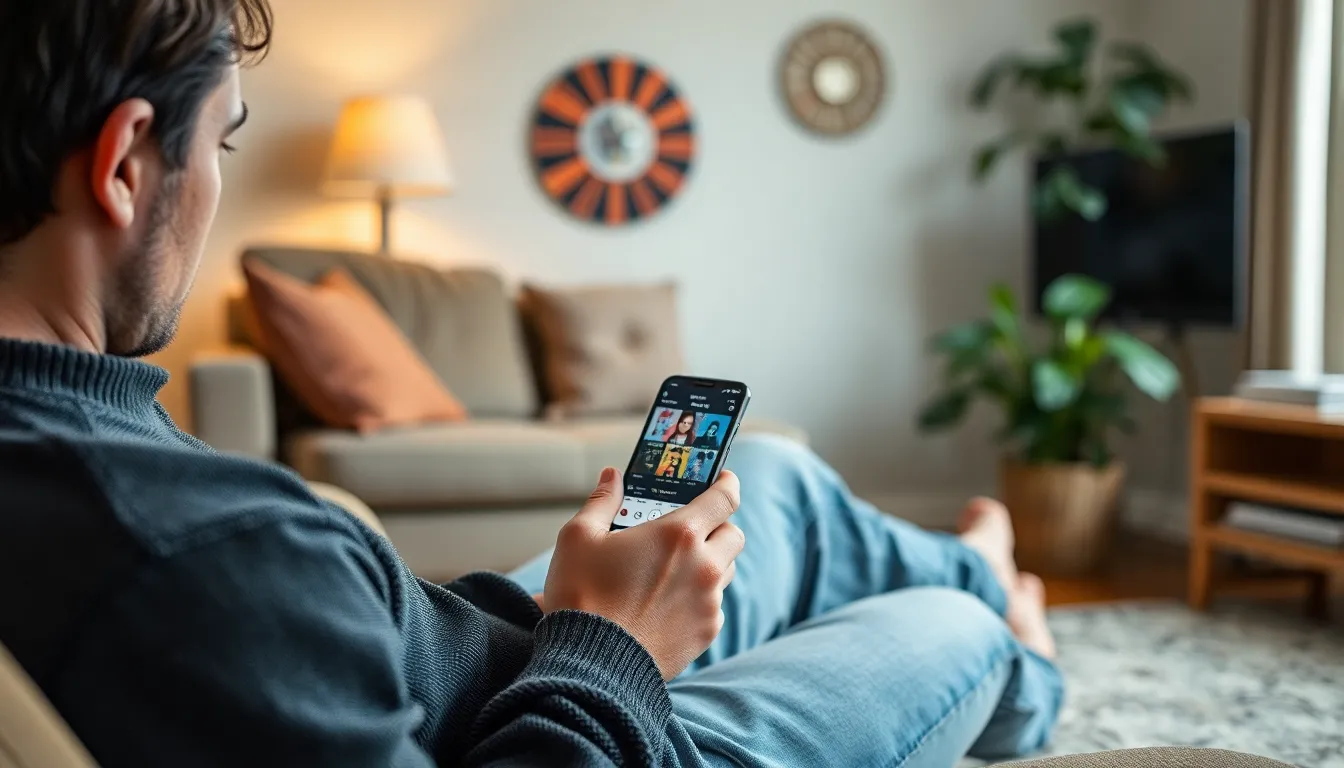Imagine this: you’re on a long commute, your favorite song pops into your head, and you realize you can’t find it on your iPhone. Panic sets in. But fear not! Learning how to save music on your iPhone is easier than finding a needle in a haystack—especially when that needle is a catchy tune.
Table of Contents
ToggleHow To Save Music On My iPhone
Saving music on an iPhone involves several methods. Users can utilize Apple Music for seamless access to a vast library of songs. With a subscription, music downloads for offline listening become possible.
iTunes offers another option for saving music. Connect the iPhone to a computer, then open iTunes. Users can select the songs or albums desired, click the “Download” button, and sync the tracks to their device.
For those who prefer purchasing instead of streaming, the iTunes Store provides a straightforward solution. Searching for specific songs or albums within the store allows users to buy and download music directly to their devices.
Another method involves using third-party apps. Applications like Spotify or Amazon Music allow users to create playlists and download music for offline playback. Users enjoy flexibility with various genres and artists available.
iCloud Music Library simplifies access across devices. After enabling this feature, users upload their library to iCloud, ensuring all devices contain the same tracks. This sync feature maintains an organized music collection.
Bluetooth devices also enhance the listening experience. Upon connecting the iPhone to Bluetooth speakers or headphones, users can stream music from any app instantly. This connection fosters convenience and portability.
For those who want to save podcasts alongside music, podcast apps allow for easy downloads. Users can subscribe to favorite shows, ensuring they never miss an episode.
By following one or more of these methods, anyone can save their favorite music, making those long commutes more enjoyable.
Methods To Save Music

Saving music on an iPhone involves various methods that enhance accessibility and enjoyment during commutes or free time. Users can choose from options like Apple Music, iTunes, and third-party apps to obtain their favorite songs.
Using Apple Music
Apple Music requires a subscription for offline listening. Subscribers can download songs directly to their device for uninterrupted access. Users can create playlists filled with their preferred tracks and enjoy curated recommendations based on listening habits. It offers seamless synchronization across multiple devices, making music accessible anytime. The service provides a vast catalog of over 75 million songs, ensuring that users find what they’re looking for without hassle.
Using iTunes
Using iTunes facilitates syncing music from a computer to an iPhone. Users connect their device to the computer via USB and manage their music library through the iTunes application. The process allows users to transfer purchased songs or upload their own files. After selecting desired tracks, they can click the “Sync” button to transfer music to the iPhone. This method provides control over song selection, ensuring only preferred music appears on the device.
Third-Party Apps
Third-party apps like Spotify and Amazon Music offer alternative ways to save music on an iPhone. Each app provides a unique library of songs, allowing users to explore various genres and artists. Users can create custom playlists or download tracks for offline listening. These platforms often feature collaborative playlists, encouraging sharing and discovery among friends. Many third-party apps also support cross-device syncing, ensuring music remains accessible on different platforms.
Transferring Music From Computer
Transferring music from a computer to an iPhone offers users multiple methods to enjoy their favorite tracks.
Using iCloud Drive
iCloud Drive allows users to upload music files from their computer and access them on their iPhone. First, upload the music files to iCloud Drive. After the upload completes, open the Files app on the iPhone. Users can find their music files there, ready for streaming or downloading directly to their device.
Using USB Connection
Using a USB connection provides a direct method to sync music from a computer. First, connect the iPhone to the computer using a USB cable. Open iTunes or Finder, depending on the operating system. Select the connected device and navigate to the music section. Users can choose specific songs or entire playlists for transfer, ensuring that their music library stays personalized.
Best Practices For Managing Music
Managing music on an iPhone efficiently involves a few essential practices. Organizing playlists helps in quickly accessing favorite tracks. Users can create themed playlists based on mood, genre, or activity, making listening experiences more enjoyable.
Using iCloud Music Library ensures seamless access to songs across devices. Syncing with iCloud keeps libraries updated, enabling users to enjoy their music on any device linked to their Apple ID. Regularly backing up music libraries on iTunes prevents loss of favorite songs.
Monitoring storage space is crucial for optimal performance. Users should check available space and remove songs that are no longer needed. Deleting unused apps can free up additional space for music storage.
Utilizing Apple Music features enhances the music experience. Curated playlists and personalized recommendations save time and effort in finding new tracks. Subscribers can download songs for offline listening, making it easy to enjoy music without internet access.
Engaging with third-party apps broadens music options. Spotify and Amazon Music offer extensive libraries and unique features like collaborative playlists. Exploring these platforms can provide users with fresh music experiences.
Lastly, connecting to Bluetooth devices facilitates a convenient listening experience. Pairing with headphones or car audio systems allows for easy playback during commutes. Using voice commands with virtual assistants also enhances hands-free accessibility to music.
Saving music on an iPhone opens up a world of enjoyment for users. With various methods available it’s easy to tailor the experience to individual preferences. Whether through Apple Music for offline listening iTunes for syncing from a computer or third-party apps like Spotify and Amazon Music there’s a solution for everyone.
By organizing playlists and utilizing iCloud Music Library users can ensure their favorite tracks are always at their fingertips. Regularly managing storage and exploring diverse music options enhances the listening experience. With these strategies in place commuting or relaxing at home becomes a much more enjoyable affair.




